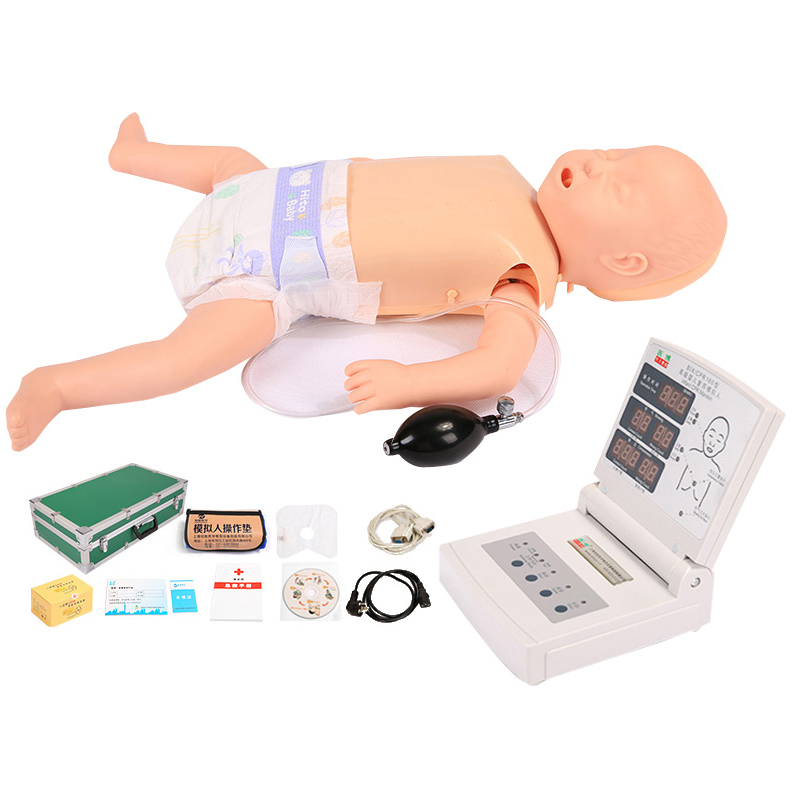Homepageпјҡ NEWS >> How does the infant comprehensive first Aid model simulate infant CPR?
The Infant Integrated First Aid model uses advanced technology and design in simulating infant cardiopulmonary resuscitation to provide a realistic training experience. Here is a detailed explanation of how the infant Integrated First Aid model simulates infant CPR:

Preparation for recovery:
First of all, the infant comprehensive first aid model simulates the physiological state of infants in emergency situations, such as respiratory arrest and cardiac arrest.
Before performing CPR, the trainer needs to make sure the model is in the correct position, usually lying on its back on a flat, hard surface.
Chest compression simulation:
The infant comprehensive first aid model is designed with a dedicated chest compression area to simulate real chest compression operations.
The trainer needs to pinpoint the right place to press, usually on the lower part of the baby's sternum, one finger below the point where the nipple line meets the midpoint of the sternum.
The depth and frequency of the presses are key to the simulation. According to international standards, the depth of the baby's chest compression should be 1/3 of the front and back diameter of the chest, about 4cm. The frequency of pressing is at least 100 times/min.
Through the built-in sensor and feedback system, the infant integrated first aid model can monitor and display key data such as the depth and frequency of pressing in real time to ensure that the trainer can achieve the correct pressing effect.
Artificial respiration simulation:
After chest compressions, the infant comprehensive first aid model also needs to simulate artificial respiration.
The trainer needs to open the baby's airway, which is usually done by placing the palm of the hand on the baby's forehead and then gently tilting its head back with two fingers under the tip of the chin.
Next, the trainer needs to put his or her mouth over the baby's nose and mouth to create a tight seal, and then slowly blow twice. The amount of each blow should be controlled between 30-50ml.
Through the built-in sensor and feedback system, the infant integrated first aid model can monitor and display key data such as the amount and frequency of air blowing in real time to ensure that the trainer can achieve the correct artificial respiration effect.
Evaluation of resuscitation effect:
After completing a series of cardiopulmonary resuscitation operations, the infant integrated first aid model will automatically evaluate the resuscitation effect according to the operation of the trainer.
Through the built-in display or indicator light, the model can display key data during the resuscitation process in real time, such as depth of pressure, frequency, blowing volume, etc., as well as the final evaluation result of the resuscitation effect.
In short, the infant comprehensive first aid model provides a realistic training environment for the trainer by simulating the real infant CPR operation process, which helps to improve their first aid skills and coping ability in practical work.